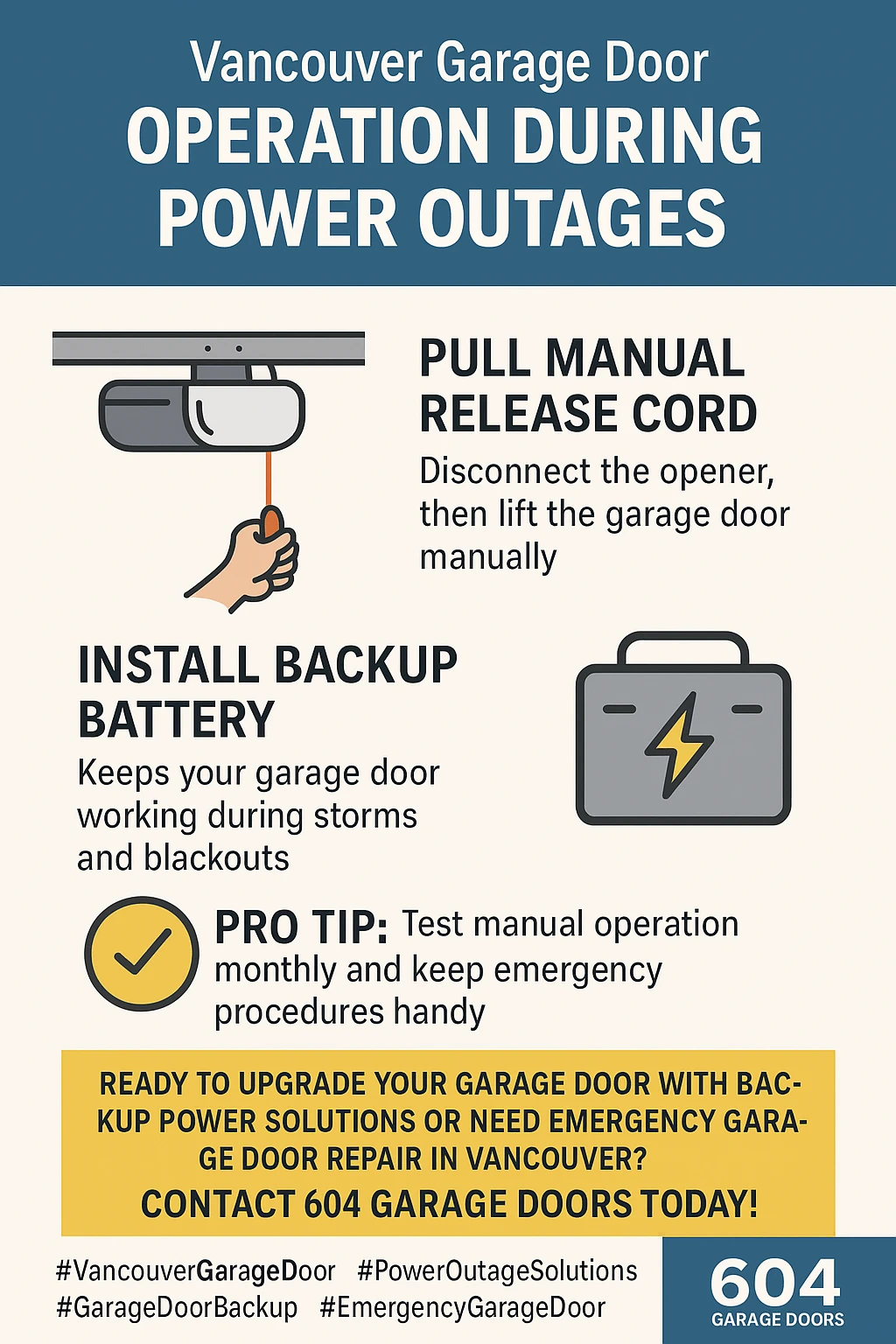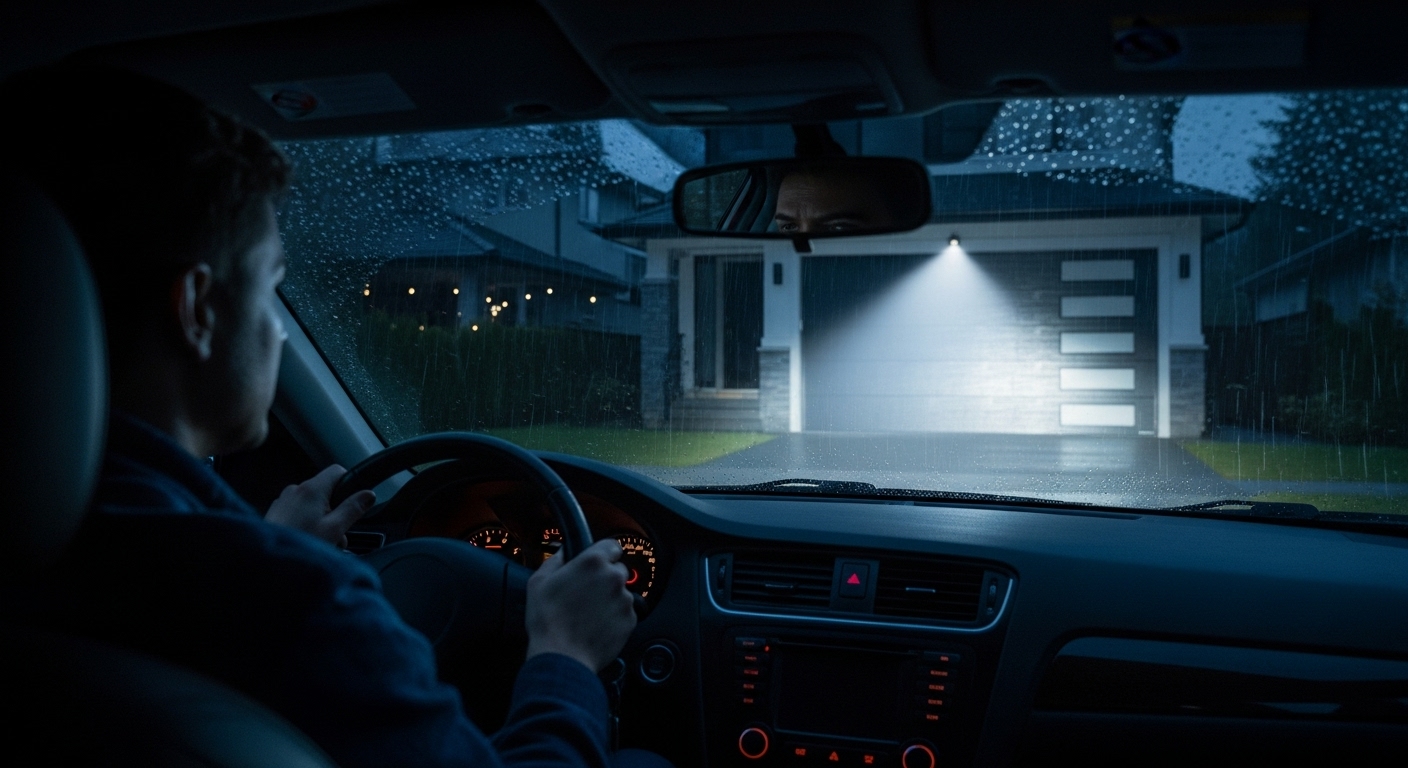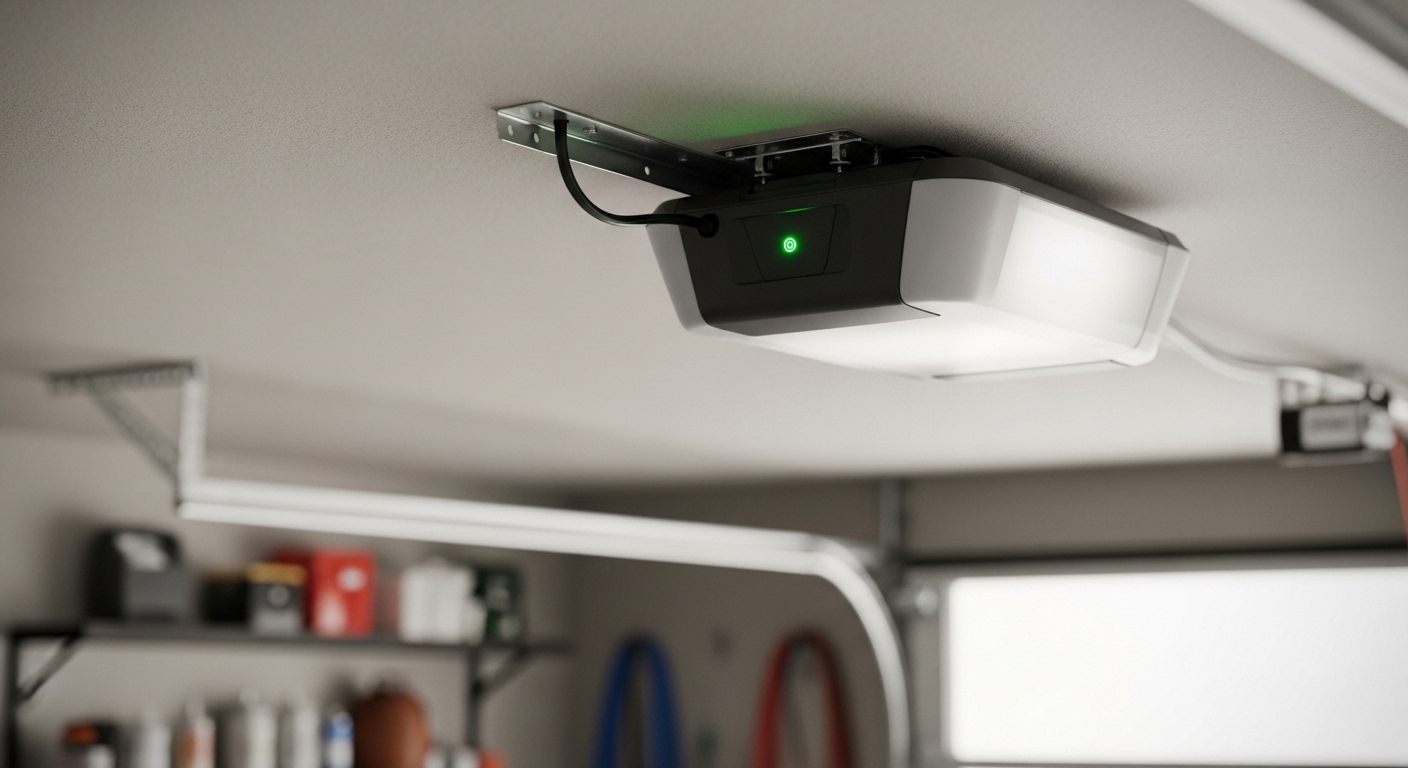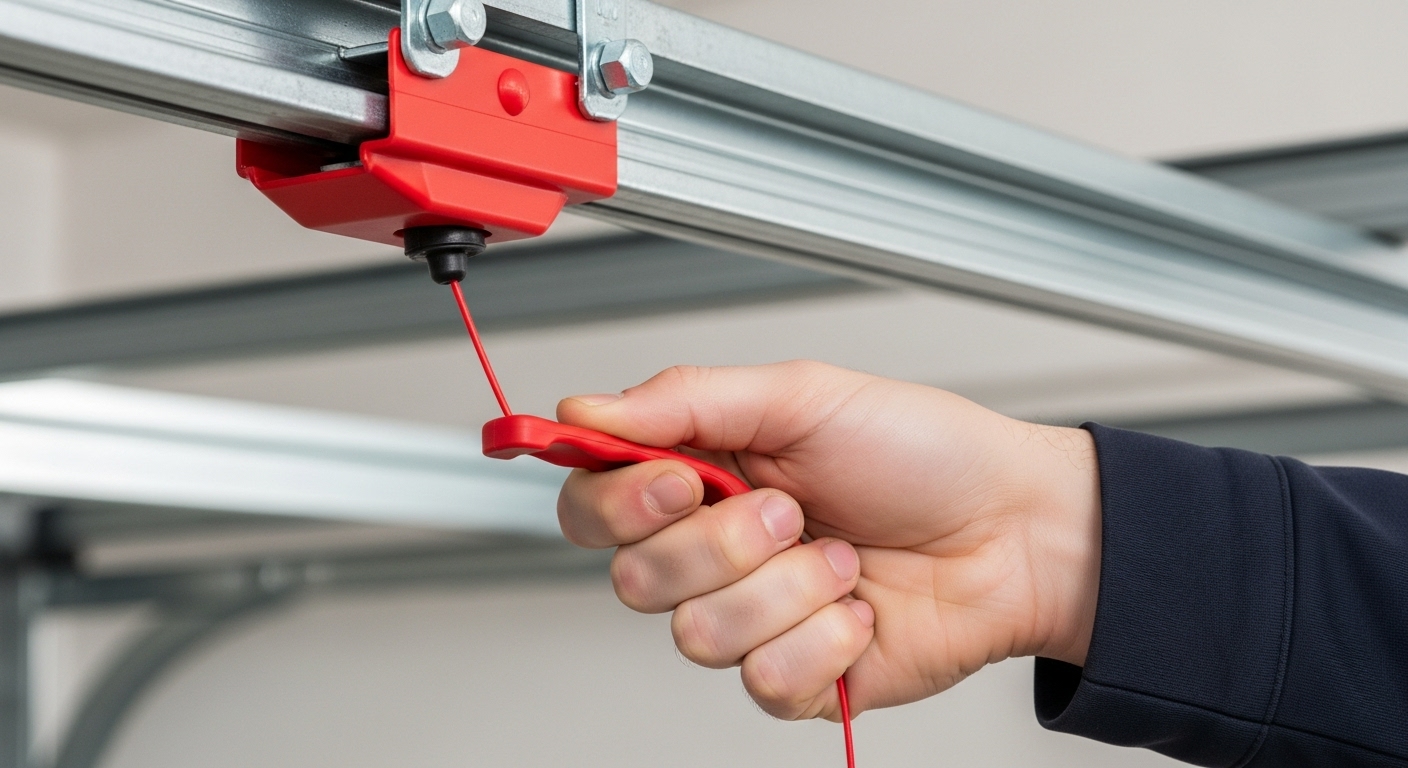How Vancouver’s Power Outages Affect Your Garage Door: Backup Solutions and Manual Operation Guide for Emergency Situations
Stuck outside your home because your garage door won’t budge after the power went out? We’ll walk you through everything you need to know about keeping your garage door functional during Vancouver’s increasingly frequent power outages, from battery backup systems to emergency manual operation techniques.Picture this: you’re pulling into your driveway after a long day, clicking your garage door remote like you’ve done a thousand times before, and… nothing. The neighborhood’s dark, the power’s out thanks to another one of those gnarly Vancouver windstorms, and suddenly you’re having a very awkward conversation with your garage door about why it’s decided to ghost you.If this scenario sounds familiar (or terrifyingly possible), you’re definitely not alone. Vancouver has been getting absolutely hammered with power outages lately – like, record-breaking levels of electrical chaos that have left homeowners scrambling to figure out how to actually get into their own homes. And honestly? Most of us have gotten so used to the convenience of automatic garage doors that we’ve completely forgotten there are backup plans for when the grid decides to take an unscheduled nap.The thing is, your garage door doesn’t have to become a giant, immovable wall between you and your car just because BC Hydro is having a rough day. There are actually some pretty solid solutions and techniques that can keep you mobile and secure, even when Mother Nature is throwing her worst tantrum. Whether you’re looking at installing a backup battery system, learning the ancient art of manual garage door operation, or just want to be prepared for the next big storm, we’ve got you covered with practical advice that actually works in real-world situations.
Key Outtakes:
- Vancouver experienced over 1.4 million power outages in 2024 – the most in BC Hydro’s history – making garage door backup solutions essential for local homeowners
- Battery backup systems cost $50-150 and can power multiple door cycles during outages, while portable power stations offer extended backup capability
- Every automatic garage door has a manual release cord (usually red) that allows emergency operation, but must be used safely when the door is closed
- Smart preparation includes emergency supplies, regular maintenance, and understanding when to call professionals versus handling issues yourself
- Storm preparation and structural reinforcement can prevent expensive damage and maintain door functionality during severe weather events

Understanding Vancouver’s Power Outage Reality and Your Garage Door’s Vulnerability
Let’s start with some real talk about what we’re dealing with here in Vancouver. The 2024 storm season was absolutely brutal for our electrical infrastructure. BC Hydro reported that customers experienced over 1.4 million weather-related power outages last year – literally the most in the company’s entire history. Three massive storms in November and December alone knocked out power for about a million people combined. The culprit? Years of drought left trees bone-dry and way more likely to take out power lines when the wind started howling.Now, here’s where things get personal for your garage door situation. When the power cuts out, your automatic opener basically becomes an expensive paperweight. These systems are completely dependent on electricity to function – no juice means no movement, period. And it’s not just about the immediate inconvenience of being locked out. Power restoration can create dangerous electrical surges that damage sensitive garage door opener components, potentially costing you hundreds or even thousands in repairs. The psychological aspect is real too. There’s something uniquely frustrating about being trapped on either side of your garage door, especially during an emergency. Whether you need to evacuate quickly, get to work, or just retrieve something important from your car, a non-functioning garage door can turn a minor inconvenience into a genuine crisis. Understanding that these outages are becoming more frequent and severe means it’s time to stop hoping for the best and start preparing for the inevitable.What makes Vancouver’s situation particularly challenging is our coastal climate. The combination of salt spray, moisture, and temperature fluctuations creates additional stress on garage door components. Springs corrode faster, metal parts rust more quickly, and the electronic components are more susceptible to damage from humidity and electrical surges. This means that when power outages do occur, Vancouver garage doors are often dealing with underlying maintenance issues that make manual operation more difficult or potentially dangerous.
The psychological aspect is real too. There’s something uniquely frustrating about being trapped on either side of your garage door, especially during an emergency. Whether you need to evacuate quickly, get to work, or just retrieve something important from your car, a non-functioning garage door can turn a minor inconvenience into a genuine crisis. Understanding that these outages are becoming more frequent and severe means it’s time to stop hoping for the best and start preparing for the inevitable.What makes Vancouver’s situation particularly challenging is our coastal climate. The combination of salt spray, moisture, and temperature fluctuations creates additional stress on garage door components. Springs corrode faster, metal parts rust more quickly, and the electronic components are more susceptible to damage from humidity and electrical surges. This means that when power outages do occur, Vancouver garage doors are often dealing with underlying maintenance issues that make manual operation more difficult or potentially dangerous.
Battery Backup Systems: Your First Line of Defense
Now that we’ve established why this is such a big deal, let’s talk solutions. Battery backup systems are honestly the gold standard for keeping your garage door functional during power outages. These aren’t some complicated, high-tech gadgets that require an engineering degree to install – they’re actually pretty straightforward devices that maintain a trickle charge from your home’s electrical supply and kick in automatically when the power goes out.  LiftMaster, one of the biggest names in garage door openers, makes battery backup systems that typically last one to two years before needing replacement. When the little LED light starts flashing to tell you it’s time for a new battery, the swap takes maybe five minutes and doesn’t require any special tools or technical skills. It’s literally as simple as unplugging the old battery and plugging in the new one.The performance specs on these systems are actually pretty impressive. A typical battery backup can handle three to six complete door opening and closing cycles on a single charge, which is usually plenty for getting your car out during an outage and securing everything back up. For extended outages, portable power stations like the Jackery Explorer series offer additional backup capacity, with various models providing different wattage outputs depending on your specific needs.Here’s something interesting that affects us here in BC: California passed legislation in 2019 requiring all new garage door openers to include battery backup functionality. While that law doesn’t technically apply to us, it’s influenced industry standards across North America, so many newer systems either come with backup capability standard or offer it as an easy add-on option.The cost for adding battery backup to your system typically runs between $50 and $150, which is honestly pretty reasonable when you consider the convenience and peace of mind it provides. For homeowners who experience frequent outages, investing in a more robust portable power station might make sense, while those in areas with less frequent disruptions might find the basic built-in backup systems perfectly adequate.
LiftMaster, one of the biggest names in garage door openers, makes battery backup systems that typically last one to two years before needing replacement. When the little LED light starts flashing to tell you it’s time for a new battery, the swap takes maybe five minutes and doesn’t require any special tools or technical skills. It’s literally as simple as unplugging the old battery and plugging in the new one.The performance specs on these systems are actually pretty impressive. A typical battery backup can handle three to six complete door opening and closing cycles on a single charge, which is usually plenty for getting your car out during an outage and securing everything back up. For extended outages, portable power stations like the Jackery Explorer series offer additional backup capacity, with various models providing different wattage outputs depending on your specific needs.Here’s something interesting that affects us here in BC: California passed legislation in 2019 requiring all new garage door openers to include battery backup functionality. While that law doesn’t technically apply to us, it’s influenced industry standards across North America, so many newer systems either come with backup capability standard or offer it as an easy add-on option.The cost for adding battery backup to your system typically runs between $50 and $150, which is honestly pretty reasonable when you consider the convenience and peace of mind it provides. For homeowners who experience frequent outages, investing in a more robust portable power station might make sense, while those in areas with less frequent disruptions might find the basic built-in backup systems perfectly adequate.
Manual Operation: Mastering the Emergency Release
Every single automatic garage door opener comes equipped with an emergency manual release mechanism, but here’s the thing – most people have never actually used it and have no idea how it works. This is definitely one of those “better to know it and not need it” situations, because fumbling around trying to figure out the emergency release in the dark during a power outage is not fun.The manual release mechanism typically consists of a red rope or cord with a red handle that hangs down from the garage door opener track. To engage manual operation mode, you need to locate this red release handle and pull it firmly downward, which disconnects the door from the motorized trolley and allows you to operate it by hand.  Here’s the critical safety point that can literally save your life: the garage door MUST be completely closed before you pull that emergency release cord. If you engage manual mode while the door is partially or fully open, the entire weight of the door (typically 300-700 pounds) can come crashing down due to gravity. This isn’t just a “might cause some damage” situation – people have been seriously injured or killed by falling garage doors.Once you’ve safely disengaged the automatic system with the door closed, you can grab the bottom handle of the door and manually lift it up. Fair warning: garage doors are heavy. Even with properly functioning springs that help counterbalance the weight, you’re still dealing with a substantial amount of mass. Having a second person help with the lifting is always a good idea, especially if you have any back issues or strength limitations.When it’s time to close the door manually, the process is essentially the reverse – grab the bottom handle and slowly guide the door down. The key word here is “slowly.” Don’t just let
Here’s the critical safety point that can literally save your life: the garage door MUST be completely closed before you pull that emergency release cord. If you engage manual mode while the door is partially or fully open, the entire weight of the door (typically 300-700 pounds) can come crashing down due to gravity. This isn’t just a “might cause some damage” situation – people have been seriously injured or killed by falling garage doors.Once you’ve safely disengaged the automatic system with the door closed, you can grab the bottom handle of the door and manually lift it up. Fair warning: garage doors are heavy. Even with properly functioning springs that help counterbalance the weight, you’re still dealing with a substantial amount of mass. Having a second person help with the lifting is always a good idea, especially if you have any back issues or strength limitations.When it’s time to close the door manually, the process is essentially the reverse – grab the bottom handle and slowly guide the door down. The key word here is “slowly.” Don’t just let


